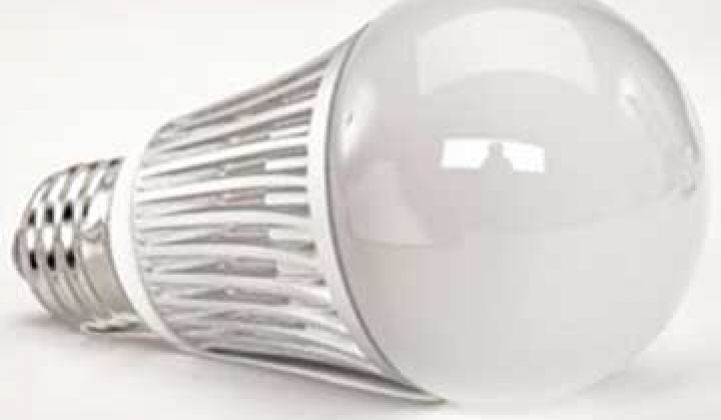Lighting Science Group has raised a new round of funding totaling approximately $140 million. The money will be used to finance the company’s growth, expand manufacturing and help keep its place as one of the leaders in the consumer and commercial LED market.
Approximately $88 million of the money is new equity funding and commitments, and another $52 million is the conversion of existing bridge financing since the fourth quarter of last year.
Lighting Science Group produced 4.5 million LEDs in 2011, a 450 percent increase over 2010. The LED market continues to mature, particularly in certain commercial applications. Lighting Science also began embedding a chip from semiconductor giant Marvell, which was named a 2012 CES Innovations Design and Engineering Award Honoree.
The funding was led by Riverwood Capital and Pegasus Capital Advisors, Lighting Science Group’s majority owner, also participated in the equity financing.
The money will be used to meet the demand of commercial networks, including products for retailers, the hospitality industry, military installations, municipalities and big-box home improvement stores. Lighting Science Group said $10 million will also be used to retire a related-party obligation.
Two executives who have worked with Riverwood Capital, Brad Knight and Keith Scott, will also be joining the management team of Lighting Science, as chief operation officer and chief commercial officer, respectively.
Groom Energy and GTM Research predict that the LED enterprise lighting market will grow by 30 percent in 2011 and surpass $1 billion in annual revenue by 2014. Most of the early growth will come in the commercial and industrial LED lighting space, where the 2010 U.S. market stood at about $330 million in annual revenue.
Lighting Science Group is successfully competing against lighting giants like Philips, General Electric and Sylvania in the LED space. The incumbents are also looking to stay on top of the market with more innovative offerings. Sylvania recently partnered with Daintree Networks for networked lighting. Falling prices of LEDs are also lifting the prospects of nearly all players in the market, both large and small.
For the moment, the market is still wide open, and there’s space for everyone to play.



